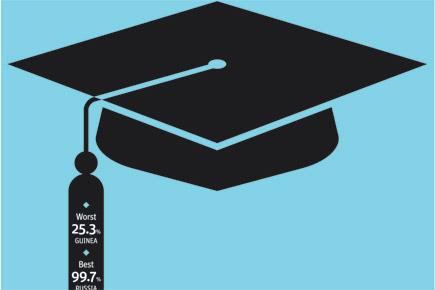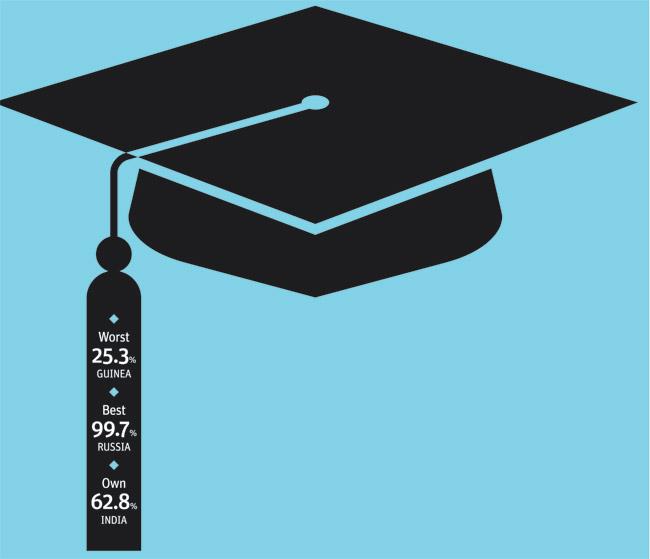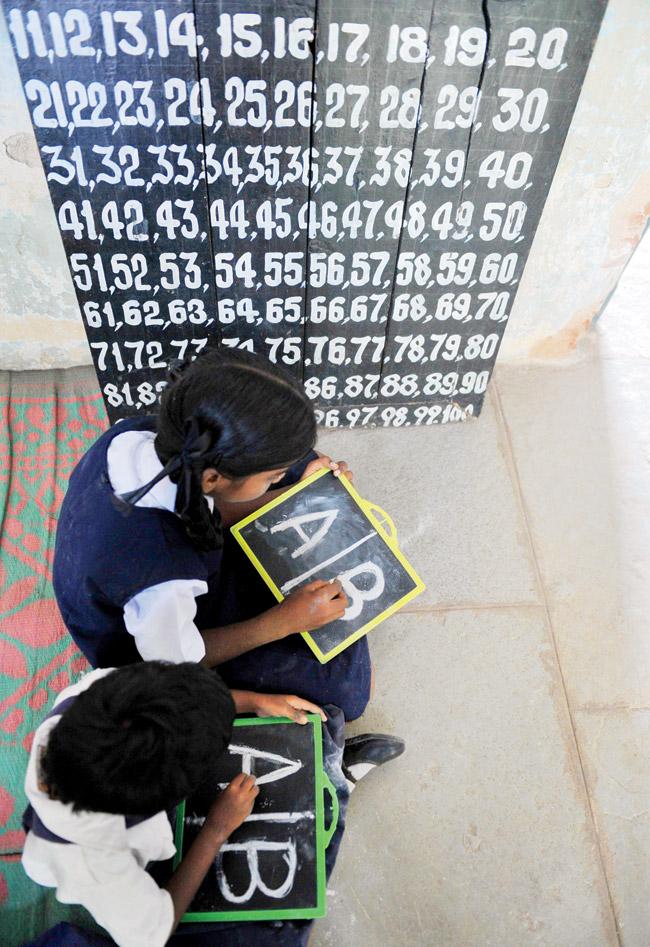On November 17, 1965, UNESCO marked today as the World Literacy Day. As the world celebrates and creates awareness on education, the guide has compiled an informative list of facts, figures and data from a world that loves words.

litteracy
1. Globally, 250 million children of primary school age, whether they are in school or not, lack basic reading and writing skills. (UNESCO report 2013)
ADVERTISEMENT
2. There are 57 million out of school children, out of which 1/2 will never enter a classroom and 1/2 have dropped out or will start late. (UNESCO report 2013)

3. The annual cost of illiteracy to the global economy is estimated at US$1.19 trillion. (World Literacy Foundation)
4. At current rates, there could be more children out of school in 2015 than there are now, and education for all could take over 75 years to achieve. (World Literacy Foundation)

Indian school children write English alphabets on slates at a government primary school in the outskirts of Hyderabad on June 13, 2011, on the opening day of the new academic year. The state of Andhra Pradesh has introduced English as a second language from Class 1 onwards for the 2011-2012 academic year. India’s National Knowledge Commission has admitted that no more than one percent of country’s population uses English as a second language. Pic/AFP
5. Seven million cases of HIV/AIDS could be prevented in the next decade if every child received an education.
(World Literacy Foundation)
6. India’s literacy rate: 62.8% (according to UN REPORT, 2013)
7. In India, the gross enrollment ratio for primary education is 103.7% for female and 106.9% for male. But when the time comes for secondary education, the gross enrollment ratio drops to less than half, 45% for female and 56.1% for male.
(UNESCO Institute of Statistics)
8. A total of 122 languages are each spoken by more than 10,000 people and six languages — Hindi, Bengali, Telugu, Tamil, Marathi, Urdu — are spoken by 50 million people or more. Hindi is the mother tongue of 41% of the population. English is a subsidiary official language. (An Allianz publication)
9. Bihar recorded the least literacy of 63.82%. (Nabard.org)
10. Tripura has achieved the first position in literacy with 94.65%, beating Kerala (93.91 %). (Governancenow.com)
11. In India, 197 languages are endangered. (UNESCO.org)
12. The pupil (student) teacher ratio was 43 for primary schools, 37 for upper primary schools and 31 for secondary/senior secondary schools in 1990-91. This ratio stood at 46, 34 and 33 in 2005-06 and 43, 33 and 34 in 2010-11 for primary schools, upper primary schools and secondary/ senior secondary schools respectively. (SAARC Development Goals Report 2013)
13. India has by far the largest population of illiterate adults at 287 million, amounting to 37% of the global total, a United Nations report said highlighting the huge disparities existing in education levels of the country’s rich and poor.
 Subscribe today by clicking the link and stay updated with the latest news!" Click here!
Subscribe today by clicking the link and stay updated with the latest news!" Click here!






